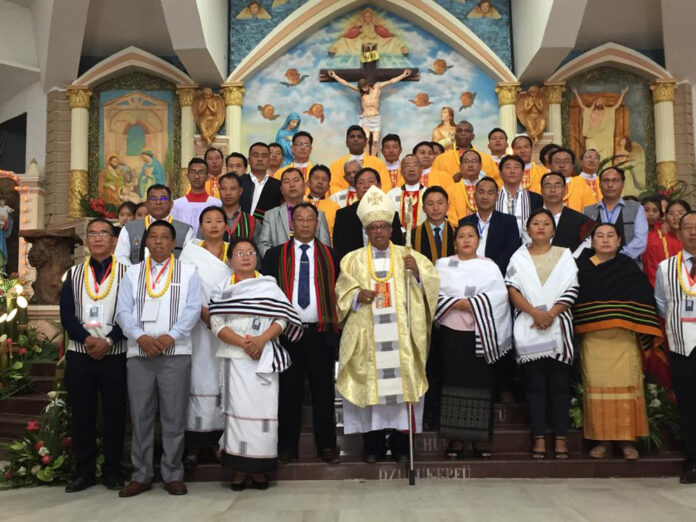Catholicism’s journey in Nagaland, a state in northeastern India, is a captivating narrative of evolution and integration. It commenced with medical missions but has evolved to encompass not just the spiritual dimension but also contributions to education and healthcare within local communities.
Early Medical Missions
Catholicism’s ingress into Nagaland can be traced back to the late 19th and early 20th centuries when missionaries, primarily hailing from Ireland, ventured into the region. These pioneering Catholic missionaries aimed to offer medical care, often serving as the initial point of contact between the local populace and the missionaries.
The Healing Touch
The missions introduced modern medicine and healthcare facilities, which greatly benefited the Naga people who had limited access to medical services. The healing touch of Catholic missionaries earned their trust and respect.
Educational Endeavors
Simultaneously, along with medical services, education emerged as a fundamental facet of the Catholic missions. The missionaries initiated the establishment of schools, providing opportunities for the local population to acquire a formal education, which played a pivotal role in the region’s social development.
Cultural Integration
As time elapsed, the Catholic missions, apart from providing medical and educational services, also became actively involved in cultural integration. They accorded due respect to the traditions and customs of the Naga people while merging them with the Catholic faith.
Spiritual Influence
Though the early Catholic presence in Nagaland predominantly concentrated on medical and educational services, the spiritual element gradually gained prominence. The Naga people, renowned for their diverse spiritual beliefs, began to embrace Catholicism, finding solace and a sense of community within the faith.
Catholicism in Contemporary Nagaland
In the present day, the Catholic Church in Nagaland occupies a significant role in the lives of many Nagas. It boasts numerous churches and institutions spread across the state, providing not just religious services but also extending support in education and healthcare.
Educational Institutions
Catholic-administered schools, colleges, and universities have left an indelible mark on Nagaland’s educational landscape. These institutions are acclaimed for their dedication to offering quality education and fostering values-based learning.
Healthcare Services
Catholic healthcare facilities, including hospitals and clinics, continue to address the medical needs of the Naga people. These establishments often serve remote regions, ensuring access to healthcare for underserved communities.
Cultural Harmony
The Catholic Church in Nagaland has strived to foster cultural harmony by respecting and celebrating the Naga way of life. It has played a pivotal role in safeguarding and promoting the rich cultural heritage of the Nagas.
Community Engagement
Catholicism in Nagaland has transcended the confines of church premises. It actively engages in community development, social initiatives, and offers support to vulnerable groups, reflecting the tenets of compassion and service.
The odyssey of Catholicism in Nagaland stands as a compelling saga of adaptation and evolution. Starting as modest medical missions, Catholicism has now become an integral component of the state’s social, educational, and healthcare fabric. It embodies the potency of faith, cultural assimilation, and community service in shaping the lives of the Naga people and the destiny of their state.



